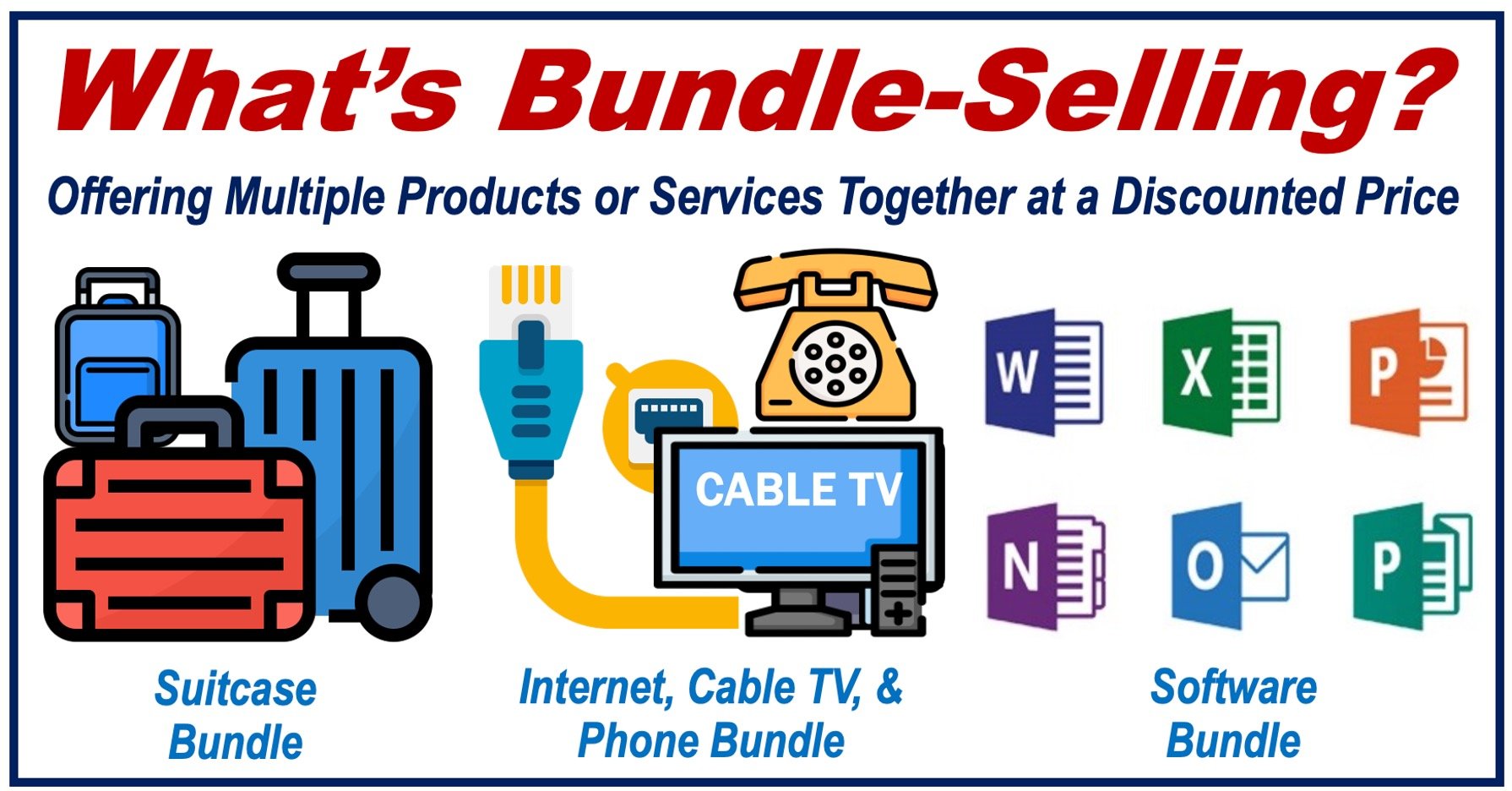What is Bundle-Selling?
Bundle-Selling, also known as Product-Bundling or Bundling, is a clever marketing strategy in which the seller offers several products together at a lower price than buying them separately.
According to Shopify.com, product-bundling can help online sellers capture both casual browsers and eager-to-buy shoppers.
Wikipedia.com says the following about “product-bundling”:
“In marketing, product bundling is offering several products or services for sale as one combined product or service package. It is a common feature in many imperfectly competitive product and service markets. Industries engaged in the practice include telecommunications services, financial services, health care, information, and consumer electronics.”
How Bundle-Selling Works
The seller makes a list of which products are regularly bought together or can complement each other nicely. They then group them into a “bundle”, offering it at a special price. The total price of the bundle is less than the total cost if each item were bought individually.
If the price is attractive, shoppers might purchase more than they had originally intended, which is great for the seller.

Different types of bundling
There are various types of bundling. Let us have a look at three of them:
-
Mixed Bundling (the most common)
In this type, the shopper gets to choose some of the items in the bundle, creating a customized package. This type of offer is popular among computer sellers, who may, for example, allow the purchaser to select the hard drive size and software options.
-
Pure Bundling
In this case, the customer can only get the items together in one package – they cannot be purchased separately or individually. Cable TV, Internet, and phone deals are commonly presented in this way.
-
Add-on Bundling
The customer buys a main product, such as a camera, and is offered related accessories and upgrades such as a carrying case and memory card.
Add-on bundling is similar to cross-selling, but not the same. Add-on bundling usually features directly related, smaller items to boost the main product, while cross-selling typically proposes distinct but complementary products for increased functionality.
Why Do Companies Use Bundling?
-
Moves Inventory
It can help companies sell slower-moving items by pairing them with popular products.
-
Increased Value
Shoppers often feel like they’re getting a better deal by buying a bundle, even if the discount isn’t huge. This increases perceived value and enhances customer satisfaction.
-
New Product Introductions
The seller can promote a new product by bundling it with a familiar, well-liked one.
Is Bundling Right for You?
Before purchasing a bundle, take a step back and do a little math. If you do not actually need everything in the bundle, would you save money if you bought just the items you need individually?
Ask yourself these key questions:
- “Do I need all the items in the bundle?
Consider whether each item will be useful to you or if some may go unused, effectively diminishing the perceived value of the bundle.
- “Would I pay less if I bought each necessary item separately?”
Analyze the cost-effectiveness by comparing the bundle price with the total of individual items’ prices to determine potential savings.
- “Does the bundle fit my needs?” Ensure that the items in the bundle suit what you are looking for.
By understanding how bundle-selling works, you can become a smarter shopper and avoid purchasing things that you do not truly need.

